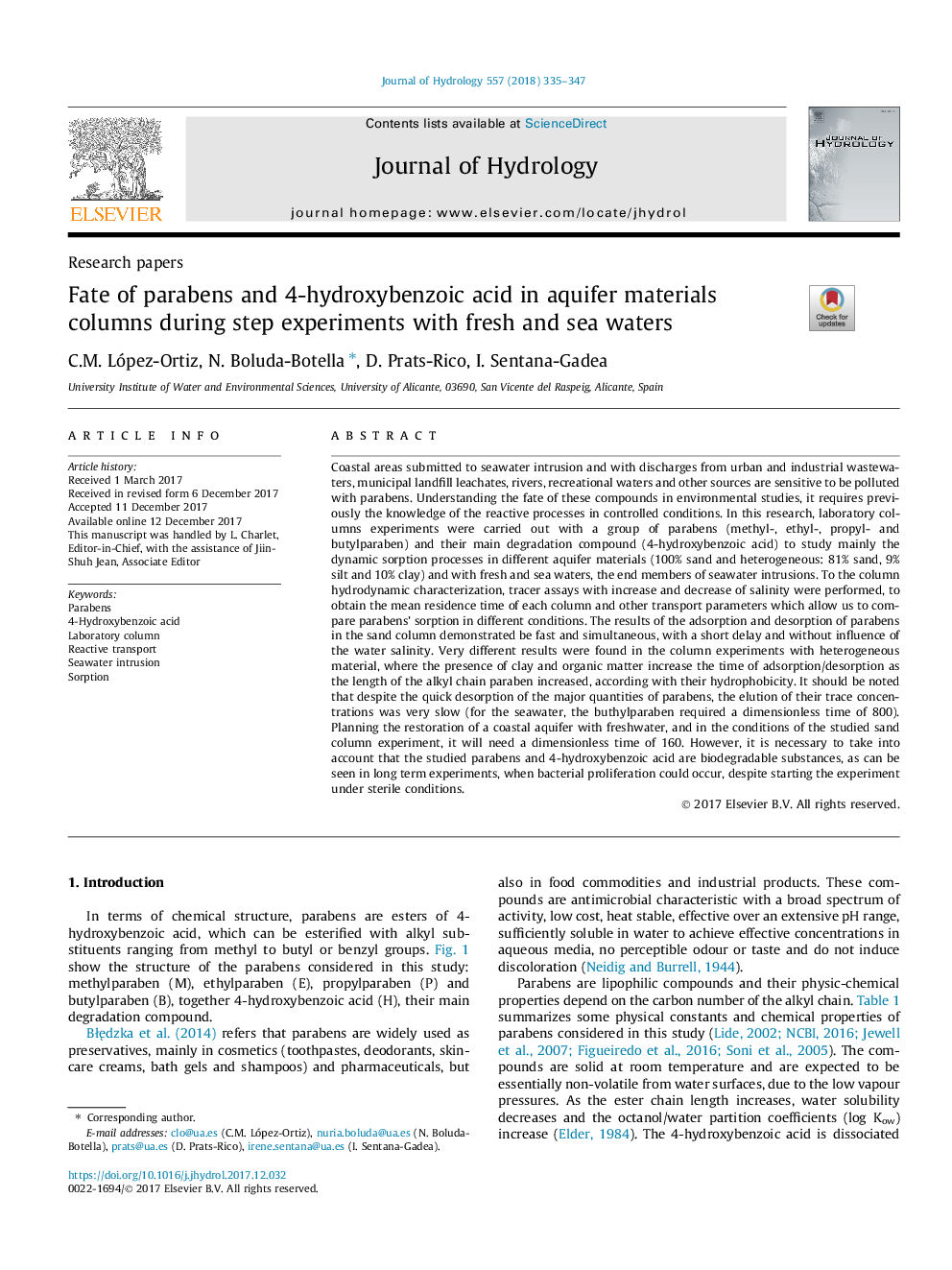| کد مقاله | کد نشریه | سال انتشار | مقاله انگلیسی | نسخه تمام متن |
|---|---|---|---|---|
| 8895023 | 1629897 | 2018 | 13 صفحه PDF | دانلود رایگان |
عنوان انگلیسی مقاله ISI
Fate of parabens and 4-hydroxybenzoic acid in aquifer materials columns during step experiments with fresh and sea waters
ترجمه فارسی عنوان
سرنوشت پارابنها و اسید 4-هیدروکسی بنزوئیک در ستونهای مواد آبخوان در طی آزمایش گام با آبهای تازه و
دانلود مقاله + سفارش ترجمه
دانلود مقاله ISI انگلیسی
رایگان برای ایرانیان
کلمات کلیدی
پارابنز، اسید 4-هیدروکسی بنزوئیک، ستون آزمایشگاهی، حمل و نقل مجدد، نفوذ آب دریا، جذب،
موضوعات مرتبط
مهندسی و علوم پایه
علوم زمین و سیارات
فرآیندهای سطح زمین
چکیده انگلیسی
Coastal areas submitted to seawater intrusion and with discharges from urban and industrial wastewaters, municipal landfill leachates, rivers, recreational waters and other sources are sensitive to be polluted with parabens. Understanding the fate of these compounds in environmental studies, it requires previously the knowledge of the reactive processes in controlled conditions. In this research, laboratory columns experiments were carried out with a group of parabens (methyl-, ethyl-, propyl- and butylparaben) and their main degradation compound (4-hydroxybenzoic acid) to study mainly the dynamic sorption processes in different aquifer materials (100% sand and heterogeneous: 81% sand, 9% silt and 10% clay) and with fresh and sea waters, the end members of seawater intrusions. To the column hydrodynamic characterization, tracer assays with increase and decrease of salinity were performed, to obtain the mean residence time of each column and other transport parameters which allow us to compare parabens' sorption in different conditions. The results of the adsorption and desorption of parabens in the sand column demonstrated be fast and simultaneous, with a short delay and without influence of the water salinity. Very different results were found in the column experiments with heterogeneous material, where the presence of clay and organic matter increase the time of adsorption/desorption as the length of the alkyl chain paraben increased, according with their hydrophobicity. It should be noted that despite the quick desorption of the major quantities of parabens, the elution of their trace concentrations was very slow (for the seawater, the buthylparaben required a dimensionless time of 800). Planning the restoration of a coastal aquifer with freshwater, and in the conditions of the studied sand column experiment, it will need a dimensionless time of 160. However, it is necessary to take into account that the studied parabens and 4-hydroxybenzoic acid are biodegradable substances, as can be seen in long term experiments, when bacterial proliferation could occur, despite starting the experiment under sterile conditions.
ناشر
Database: Elsevier - ScienceDirect (ساینس دایرکت)
Journal: Journal of Hydrology - Volume 557, February 2018, Pages 335-347
Journal: Journal of Hydrology - Volume 557, February 2018, Pages 335-347
نویسندگان
C.M. López-Ortiz, N. Boluda-Botella, D. Prats-Rico, I. Sentana-Gadea,
